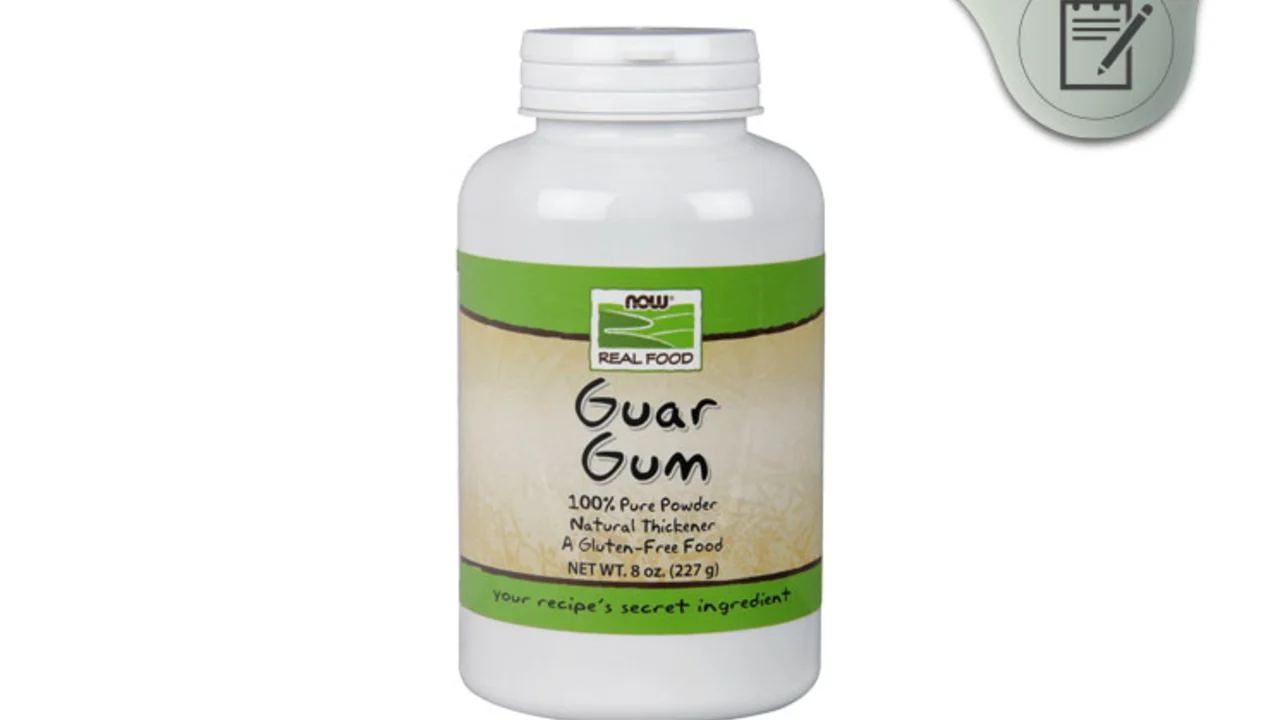Guar Gum — what it is and why people use it
If you've seen "guar gum" on ingredient labels and wondered what it does, you're not alone. Guar gum is a natural thickener and soluble fiber made from the seeds of the guar plant. Food makers use it to improve texture in sauces, ice cream, and baked goods. Pharmacists and supplement makers use it as a binder and a source of fiber. It’s cheap, effective, and shows up in lots of products.
Common uses you’ll actually encounter
In the kitchen, guar gum thickens liquids without changing flavor. In packaged foods it helps keep texture stable during storage. In pharmacies and supplement formulas, guar gum acts as a tablet binder or a bulking fiber. People also take it as a fiber supplement for bowel regularity, or to help manage cholesterol and blood sugar — more on that next.
Benefits backed by evidence (and what’s still unclear)
Guar gum is mostly water-soluble fiber. That gives it a few practical effects: it can slow how fast sugar gets absorbed after a meal, which may help blood sugar control when used with meals. Clinical trials also show modest drops in LDL cholesterol when people take guar gum regularly. As a fiber, it can soften stool and help with constipation for some users.
What’s less certain: big weight-loss effects or dramatic long-term changes in diabetes control. Benefits tend to be modest and depend on dose and diet. If you expect miracles from a small scoop, you’ll be disappointed. If you use it consistently as part of a fiber-rich diet, you may notice steady, useful improvements.
How to use it: start small. Mix guar gum into smoothies, yogurt, or soups. A little goes a long way — usually 1/4 to 1/2 teaspoon per cup of liquid for thickening. For fiber benefits, common doses in studies range from 5 g to 30 g per day, but higher doses often cause gas and bloating. Always ramp up slowly and drink plenty of water.
Side effects and safety: the most common complaints are gas, bloating, and loose stools. Rare but serious risks include intestinal blockage if you take dry powder without enough liquid. Guar gum can reduce the absorption of certain medications if taken at the same time — separate doses by at least one to two hours. Pregnant or breastfeeding people and young children should check with a clinician before using large doses.
Choosing what to buy: look for food-grade guar gum from a reputable brand. If you want it for supplements, check the label for purity and any added ingredients. If you need it as a medication binder or in a medical context, follow the product instructions or ask your pharmacist for guidance.
Quick, practical tips: start with small amounts, drink water, space it away from important meds, and expect mild gas at first. If severe abdominal pain, persistent vomiting, or signs of blockage occur, seek medical help right away. Use guar gum as a helpful tool — not a quick fix — and you’ll get the benefits without surprises.

The Science Behind Guar Gum: A Powerful Dietary Supplement for Weight Loss & More
Hi there! In the next article, I would like to delve into the science behind Guar Gum. This fantastic dietary supplement is often underappreciated, yet it's packed with amazing properties that can aid in our weight loss journeys. I will dissect the details of why and how it incorporates these benefits. So, let's uncover the hidden secrets of Guar Gum together!
Read More